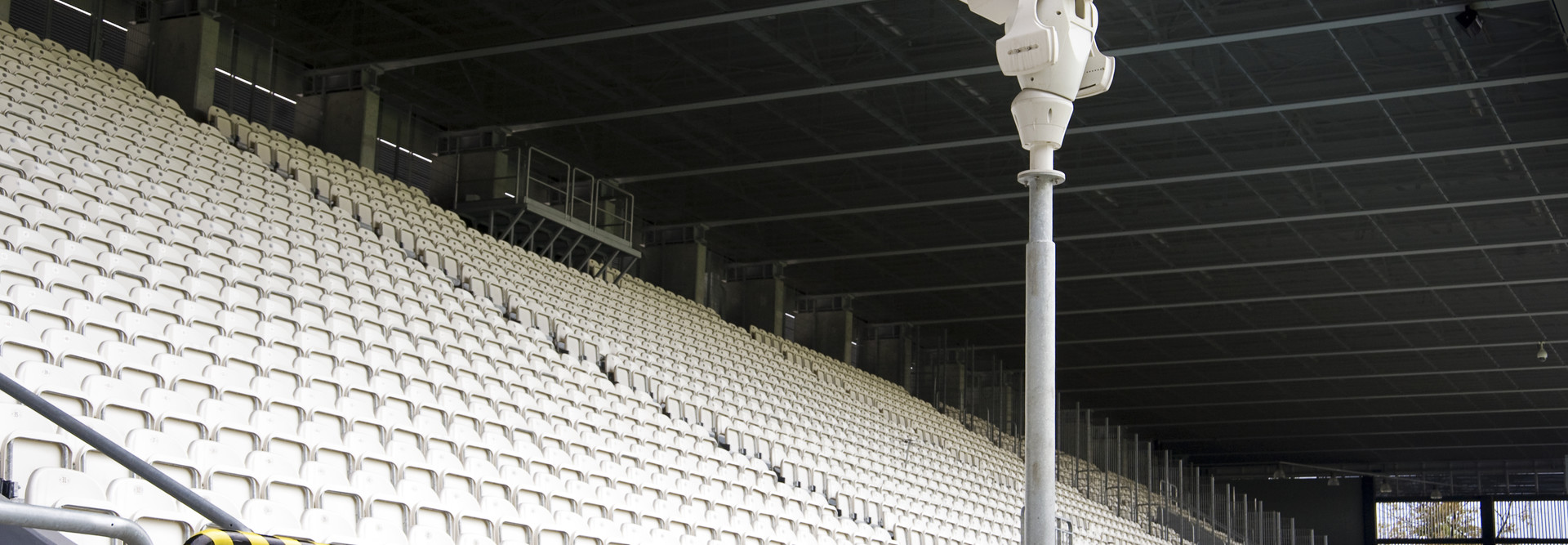Fan Safety Gets a Boost from Stadium Technology
On November 13, 2015, terrorists attacked the Stade de France, a stadium north of Paris where the French national soccer team was playing Germany. Four people were killed in the attacks, which were part of a larger terror campaign.
A few years earlier, on March 31, 2011, a San Francisco Giants fan was brutally beaten by two Dodgers fans after a game in Los Angeles. The victim suffered brain damage that left him disabled.
These incidents highlight the kind of violence that raises concerns for sports teams and venues. Sporting events can be seen as targets for organized violence such as terrorism, or may be occasions where emotions run high and things can get out of hand. Either way, teams and venues recognize the need to keep fans safe.
“Apart from the Yankees, probably the biggest threat to our business, the sports industry in general, would be some type of massive security breach or failure to execute,” explained Sam Kennedy, Boston Red Sox President and CEO, speaking at a smart venue panel at Fenway Park earlier this year. “We work very closely together with regional intelligence centers to make sure we’re doing everything we possibly can.”
Technology plays an increasingly important role in keeping venues safe. Sports organizations are relying on different tools to maintain order, keep harmful elements out of stadiums and oversee the safety of activities within their walls. These solutions include camera systems and data analytics for monitoring venues, access control systems to manage where people go and facial recognition to identify potential problems.
Video Surveillance Gets Smarter to Keep an Eye on Crowds
Stadium security teams must be able to see into every corner of a venue. Advanced video surveillance systems give them the capability not only to monitor entrances, exits, seating areas, concession stands, stairs, hallways, ticket areas and parking lots from a central location, but also to analyze what’s going on in those places.
Video surveillance systems have advanced beyond the ability to record high-definition images and store them for easy access. Now, these systems can be integrated with other safety and security solutions, such as access control and fire alarms, for security monitoring in real time. Sophisticated analytics tools enable venues to monitor activity without dedicating security personnel to the task. Automated alerts can warn stadium staff of unauthorized access and spot out-of-place objects or suspicious people. By analyzing stadium situations in real time, staff can detect potential threats more quickly and respond before they develop into problems.
“By developing comprehensive security management plans and providing better in-house training to security personnel, stadium management will help keep people safe,” says Roy Alves, country manager for the Middle East and Asia with Axis Communications, in a post to the company’s blog. “Along with these measures, more and more venues are upgrading existing analogue solutions to intelligent surveillance technology, to fill in security gaps and improve the total fan experience.”
MORE FROM BIZTECH: How sports and IT intersect in the realm of cybersecurity.
How Access Control and Facial Recognition Improve Safety
Many venues are incorporating smart access control systems as part of a broader stadium security program. By connecting access controls with other security systems, such as video surveillance and environmental controls, venue operators can improve their overall security posture while gaining insights into important operations.
Adding data analytics to the equation yields even greater benefits. Predictive analytics allow stadium staff to avert security problems before they occur. Integration with analytics engines and multiple security systems also helps venue operators detect incidents more quickly, so they can respond more effectively.
Some stadiums are also piloting the use of facial recognition technology, which maps facial features captured by stadium cameras to a database of known faces to determine a person’s identity. Madison Square Garden uses facial recognition to identify fans entering the arena and help staff determine if they present a problem. Teams including the Sacramento Kings and the Dallas Mavericks use facial recognition to augment their access control efforts. The Kings use the technology to grant team personnel, including players, access to the practice facility, while the Mavericks have tested a solution to control access to the team’s locker room as well as other areas throughout the American Airlines Center.










